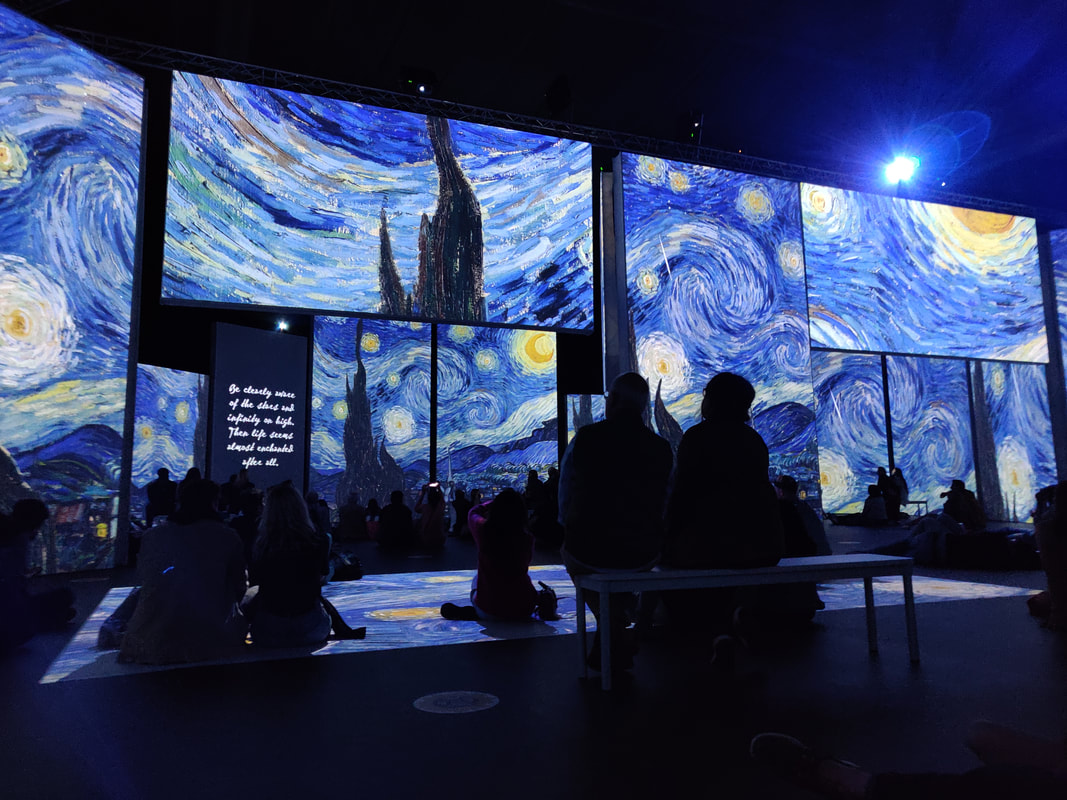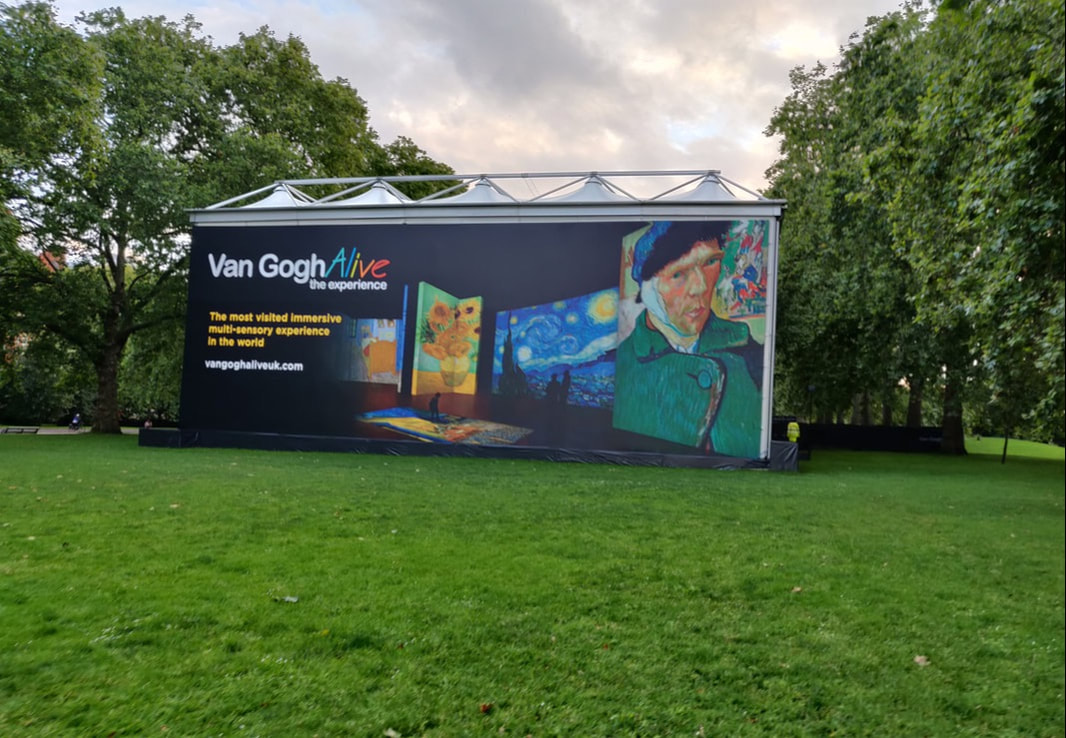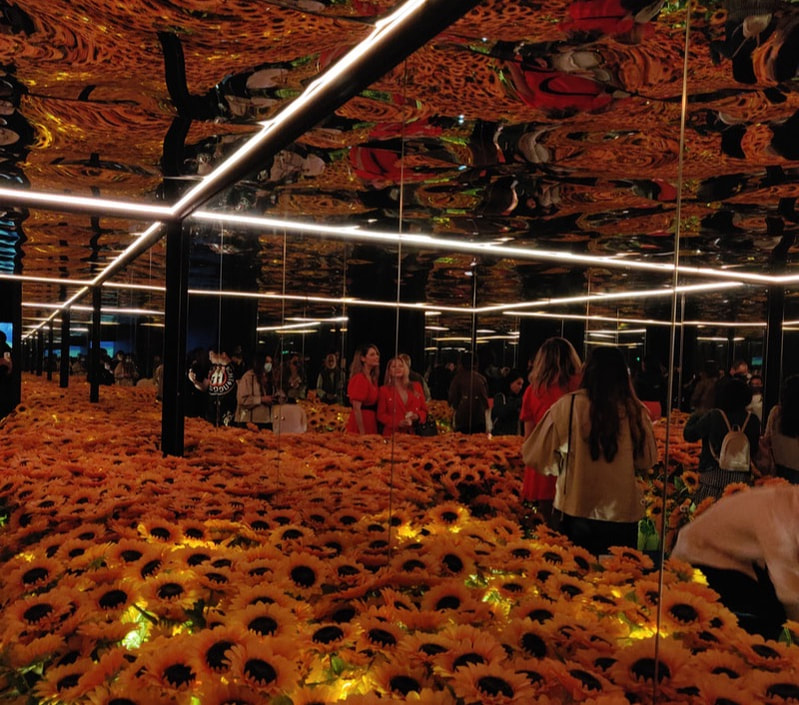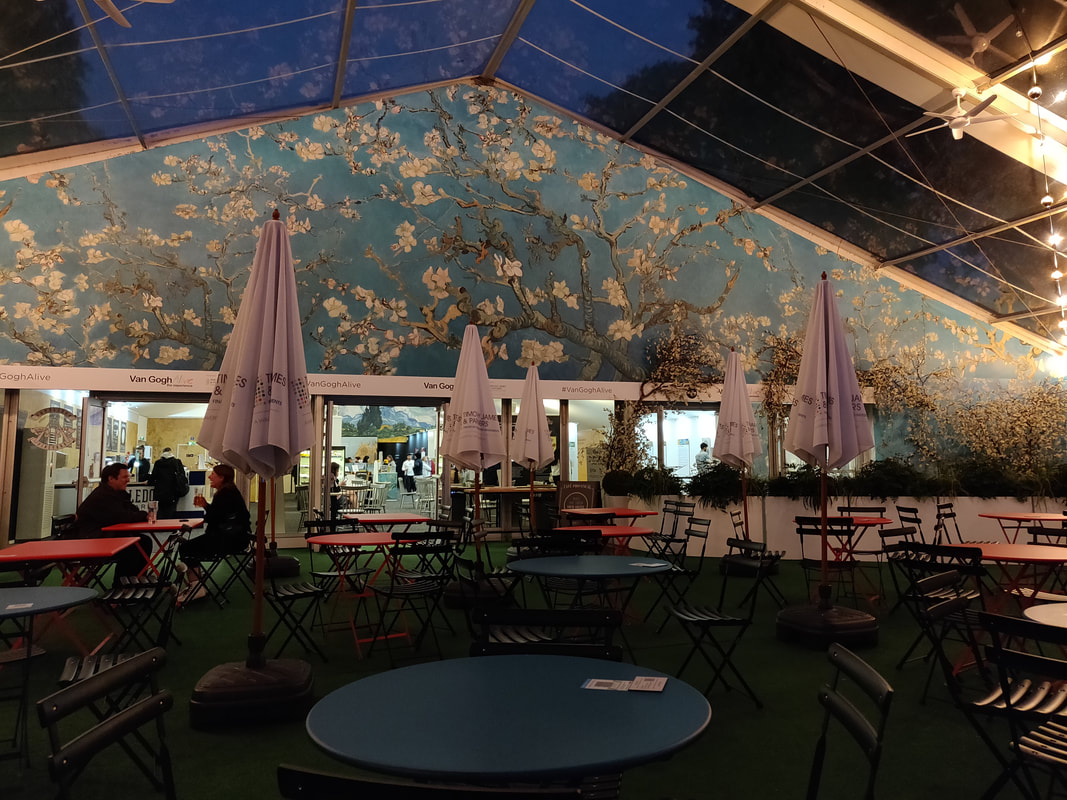Bringing art to lifeThe last exhibit I wrote about was the 'Empire of the Sikhs' exhibit made possible by the Toor Collection (and you can read my review here). It was honestly one of the best exhibitions I've ever been to because it taught me about my background and it showed me artefacts and items that I had heard about or read about. But I don't really 'get' art, I don't understand how some works of art are considered classics and others aren't - and I definitely didn't 'get' the obsession the western world has with Vincent Van Gogh. So, this exhibition was something I wasn't so sure about. Who is Van Gogh?Before we get into the exhibition, it's important to know a little about the life of Vincent Van Gogh. He was born in the middle of the 19th century to a relatively well-off family but as he came of age, he became a struggling artist unable to financially support himself which also led to a series of rejections in his love life. Moving between the Netherlands, Belgium and England, Van Gogh became increasingly unhappy, erratic and withdrawn and this was reflected in some of his earliest paintings. This period of unhappiness led to a drinking problem, and after periods of hospitalisation, he finally decided to move to Paris. His time in Paris seemed to have improved some of his condition, and his paintings became brighter, bolder and more expressive. He began painting parks, restaurants and elements of every day life in the city, eventually creating over 200 paintings during his time in the city. I really enjoyed seeing paintings of this time showing parts of a city that were lost forever in the two World Wars of the following century. Van Gogh moved to southern France to get some countryside air, settling in Arles and beginning the most productive portion of his life, creating over 300 paintings and drawings, including some of his most famous works like Vase with Twelve Sunflowers. It was also in Arles that Van Gogh's mental condition deteriorated and he ended up mutilating his ear, cutting it off with a razor blade after a psychotic attack and delivering the wrapped-up ear to a local brothel. It's a shame that when I first think of Van Gogh, this is what I think about rather than his paintings or letters. While Van Gogh had no recollection of the event, it was clear he had suffered an acute mental breakdown and so Van Gogh was placed in 'care' to recover physically and mentally. Locked up in an asylum with limited freedom his mental health continued to deteriorate and it was here where he produced some of his most haunting work, including The Starry Night. He eventually moved back to Paris producing work that he described in letters as representing his extreme sadness and loneliness and produced his last paintings. Two months after moving, he shot himself in his chest and eventually died of an infection. He was just 37. Despite some recognition during his life, his reputation really took off after the turn of the 20th century, with his paintings becoming popular initially in Austria and Germany before gaining popularity further afield after the publication of letters between him and his brother. His letters to his family, especially his brother, formed the basis of understanding his outlook and condition and are highly regarded for their quality and expressiveness of language. Today, he has a museum in his name located in Amsterdam while some of his paintings are among the most expensive in the world. The ImmersionI knew a little of Van Gogh's life and art before the exhibition - most people know the story of the ear, and can probably point out a couple of his more famous pieces of work. But I didn't really understand Van Gogh, nor truly understand the obsession with him. I put it down to an upbringing far removed from the millions that his paintings sell for in a society completely different to my own. But the Van Gogh experience had been reviewed extremely positively so I decided to give it a visit. Firstly, it's not cheap - tickets are almost £20 each for adults and a younger me would have automatically been priced out - which is a shame, because I'm very glad I went and it opened my eyes to a new world. While tickets to the run in Birmingham had closed, the London run was still going and so I visited the temporary marquee constructed in Hyde Park, opposite the Royal Albert Hall. It's a fairly large structure, and after showing tickets to get in, copies of some of Van Gogh's more famous works and the stories behind them hang in an entrance room. It is a good introduction to the life of Van Gogh, but certainly nothing you wouldn't find in a museum or art gallery (or Wikipedia). What stood out here, was the immersive experience. After making my way through a small door I entered a large hall with screens set out everywhere (even the floor). Projections of Van Gogh's paintings and his life were shown across every available space, set to music that reflected the mood of each painting and time in Van Gogh's life. The hall was pretty busy and I took a seat on the floor with hundreds of others and I got completely lost in the story. I can't tell you how long I sat there, but watching the entire story I came away with a greater understanding of what he was about. I'm still no art critic, I still don't completely get it - but here was a man with emotions that tortured him - and rather than keeping them inside, he used a paintbrush to communicate those emotions with the wider world. I was particularly struck by just how much his paintings changed, evolved and reflected things that were going on his life, and when The Starry Night was projected into the room, I felt in awe. People are free to jump in and out of the hall as they please, and next to the hall there was a small room covered in sunflowers and mirrors. It's a room that has been plastered over social media this summer and I'll admit - other than watching influencers take and re-take photos over and over again - the room was pretty cool. The mirrors reflected the sunflowers so it felt like you were surrounded, and the illusion of space created by the mirrors that transformed a small room into something bigger. Toward the end of the exhibition was a stall that allowed you to draw some of Van Gogh's most famous works yourself. I was presented with a pencil, a pad and a screen to follow as I attempted to draw The Starry Night, and Bedroom in Arles. I can't say I produced any masterpieces, but it was a fun experience and a nice momento to take home. Would I recommend the exhibition?Absolutely - if you can afford it. £20 isn't cheap and it's a shame the cost is so high, because I'm probably exactly the type of person they seem to be aiming the exhibition at. Someone who doesn't understand art, someone who grew up in a completely different place, worlds away from art exhibitions and the means to understand or pursue art. But I learned that while I don't have much in common with the art world, I do have something in common with the artists, and that's a lesson that might be the foundation to build my interest in art going forward. Comments are closed.
|
AuthorBritish Sikh, born in the Midlands, based in London, travelling the world seeing new cultures. Archives
September 2023
Categories
All
|
Photos from Johnny Silvercloud, Nina A. J. G., Michael Vadon, jcorrius, mikecogh





 RSS Feed
RSS Feed